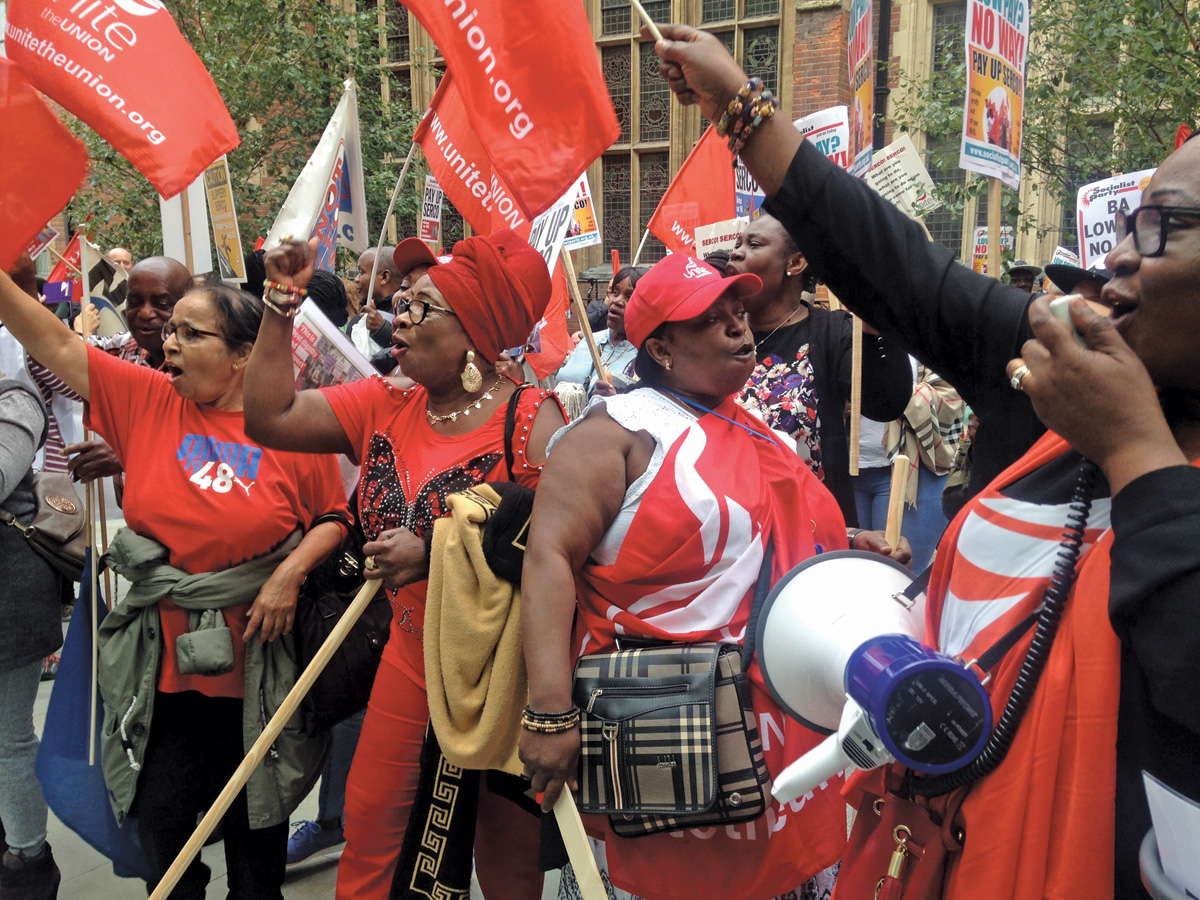Becci Heagney, Socialist Party national committee
Figures released by 10,000 large companies reveal what most of us already knew: there is a huge gender pay gap in Britain. The median across the firms is 9.8% – but some had gaps of over 70%.
Since the Equal Pay Act 1970, it has been illegal to pay men and women different amounts for the same job. However, that doesn’t mean it doesn’t happen. High-profile examples include presenters at the BBC, but it is likely to happen in many workplaces across the country.
But the main explanation for the gap in pay is that women are still overwhelmingly concentrated in lower-paid jobs or working part-time. Employers are still punishing women for taking – or even just having the potential to take – ‘career breaks’ to have children and care for families.
The average company is 52% men, but 30% of male employees are in the highest-paid quartile, compared to just 20% of women. Even companies that have a majority-women workforce are more likely to have more higher-paid men.
Unsurprisingly, the biggest gaps are in male-dominated workforces like construction and finance. Ryanair has the worst pay gap in the airline industry at 71.8%. Pilots are mainly men and most women employees are low-paid cabin crew.
The smallest pay gaps are where women workers are concentrated, such as the public sector, health and social care. No sector overall pays women more than men.
‘Women’s work’
But the main issue is that vital jobs traditionally seen as ‘women’s work’ are more likely to be low-paid and on poor terms and conditions. Most workers in the public sector have not had a pay rise in the last decade. The care industry, dominated by private companies, pays minimum wage or less.
Workers organising and taking strike action for higher pay and decent conditions – like the Ford Dagenham women sewing machinists did 50 years ago this June – is vital if we are to seriously address the pay gap.
So the trade unions should use these figures as a launch pad to fight for genuine pay equality, reversing privatisation and cuts to fund decent wages and conditions. We can take confidence from the incredible mass feminist strike in the Spanish state on 8 March.
Under capitalism, bosses will use every means at their disposal to boost profits by paying workers as little as they can get away with, including discriminating against a section of us because of our gender.
So it’s no surprise the gender pay gap is also biggest in companies with the biggest disparity between executives and workers. While socialists would oppose any woman being paid less because of her gender, the majority of women’s lives will not be improved by a tiny minority of executive women being paid bigger bonuses in the banks, for example.
We stand for pay equality – but we want more than just equality with low-paid, downtrodden men. The Socialist Party fights for decent pay and jobs for all, taking big business out of the hands of the super-rich exploiters.
United workers’ action can tackle the growing inequality between the owners and top executives who are getting richer, and the rest of us struggling because of wage restraint for their profits.








